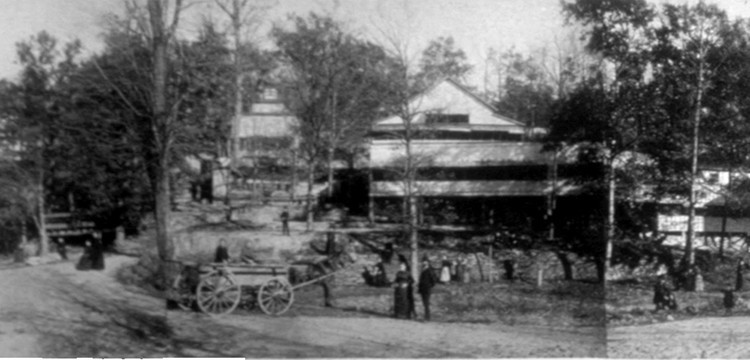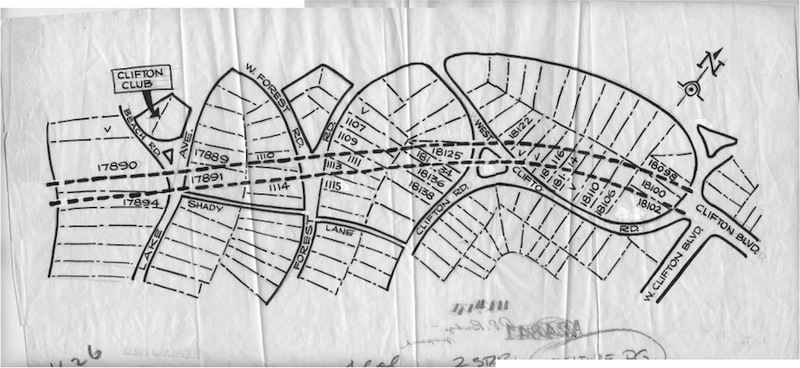
Clifton Park, located in the northwestern corner of Lakewood, Ohio along the bluffs of Lake Erie and the Rocky River Valley, was the brainchild of a group of real estate developers who envisioned it as a summer resort in 1866. Amenities included beaches and boating, picnic groves, a dance hall, and beer gardens. After many successful years the resort's popularity began to wane, so in 1895 the Clifton Park Association turned their focus toward an exclusive residential community.
The association hired famed landscape architect Ernest W. Bowditch to design Clifton Park. Bowditch was nationally known for his work on many Newport, Rhode Island estates, including the renowned Breakers, as well as the communities of Tuxedo Park, New York. He was also behind a few other projects in the Cleveland area, including Rockefeller Park, the Euclid Heights allotment, and Shaker Lakes on Cleveland's east side.
Unlike the grid pattern of most other Lakewood neighborhoods, Clifton Park was conceived as a collection of winding streets covering about one-half square mile. The first home was built as a summer retreat by attorney William Starkweather, the son of former Cleveland mayor and judge Samuel Starkweather. The oldest home still standing is at 17862 Lake Road, built in 1899 by the prominent Cleveland business executive John G. Jennings.
One of the gems of this new community was the Clifton Club, located at 17884 Lake Road, which opened its doors on August 22nd, 1903. The club served as Lakewood's social center for many years with events such as lunches, dinners, teas, informal dances, and weddings. Unfortunately, the building burned down on January 11, 1942. A new building was placed on the original site in 1950 where it still stands today.
In the early 1960s, Clifton Park was cut in two when Clifton Boulevard was extended to a new bridge built over the Rocky River. Many homes were razed and the winding streets were now disconnected. Property values south of Clifton dropped, and when the neighborhood was placed on the National Register of Historic Places in 1974, only the streets north of Clifton were included.
Images










